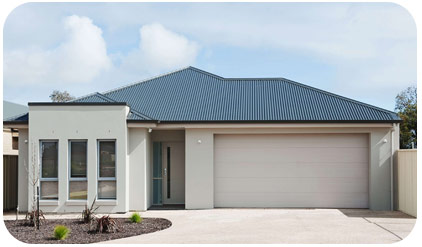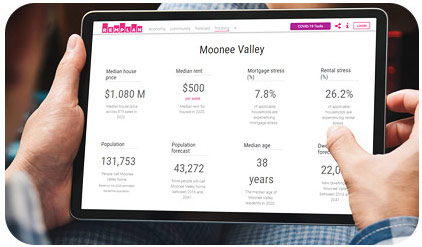REMPLAN Housing
Providing insights into housing market trends, affordability and mortgage and rental stress
Providing insights into housing market trends, affordability and mortgage and rental stress
REMPLAN’s new online, public-access Housing Profiles support you and your community to understand how the local property market is performing, the change in the number of affordable properties, and for low-income households, how many households are experiencing rent or mortgage stress.
REMPLAN Housing Profiles are available for local government areas and regions across Australia. Each profile also provides data and insights for smaller areas such as neighbourhood, suburbs or localities. Updated twice a year, the Profiles are delivered as an annual subscription and can be provided for a region of any size.


Market data for the past 10 years is displayed including for houses, units and land. The number of sales and rentals is also provided together with average and median price information. All market data reports can be benchmarked with the State data for context and comparison.

Housing affordability relates to the broader property market in terms of the cost of entering the property market, either to purchase or rent a home. This data provides insights to the areas where housing affordability is a potential issue. Using the widely adopted benchmark of housing being deemed affordable if costs are less than 30% of household incomes. The data includes property market sales transactions and rental listings for the last six years.


Housing stress relates to low-income households renting or paying a mortgage and their ability to meet their housing costs. Traditionally, it is the households in the lower 40% of income earners that are spending more than 30% of income on housing which are considered to be experiencing financial housing stress. The REMPLAN Housing Profile provides estimates of households experiencing housing stress overall and how many are suffering either mortgage stress or rental stress.

Data includes 10-year trends for annual building approvals, both by value and number of approvals. Dwelling related data is also cross-tabulated for tenure by dwelling structure by dwelling type. Data such as occupancy, household size and housing suitability is also provided.


The Housing Profile also displays a range of demographic information for the region including occupation, education, income, indigenous status, youth engagement, levels of relative disadvantage. All data is cross-tabulated by age, including 5-year age groups and life stages.

The profiles are presented as interactive public access websites allowing all your stakeholders to gain insights into housing trends in the area.
They are designed for a general audience and no training is required.